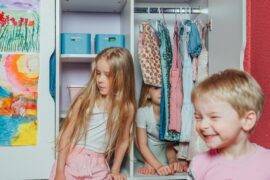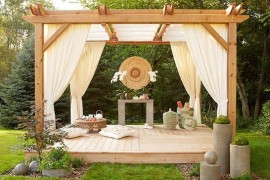Ah, the wonderful sight of a clean room! Yet when it comes to children’s rooms, sometimes the clutter outweighs the open space. Fret no more! Today’s post is dedicated to motivating children of all ages to take pride in their rooms. From helpful products that inspire organization to simple strategies that foster tidy spaces, we’ve got you covered…
Making Tidiness Easy
Empowering children to take charge of their spaces is a lot more effective when you ensure there are no obstacles on their path to tidiness.
1. Consider the layout of the room.
By giving a child plenty of nooks and shelves for stashing possessions, you create a clear path to cleanliness. This means arranging furniture in a way that prevents obstacles, as well as purchasing items that foster organization. For example, the Cubby Wall Shelf Collection from The Land of Nod makes it possible to mix and match pieces and create the ultimate setup. In other words, it makes organization fun!
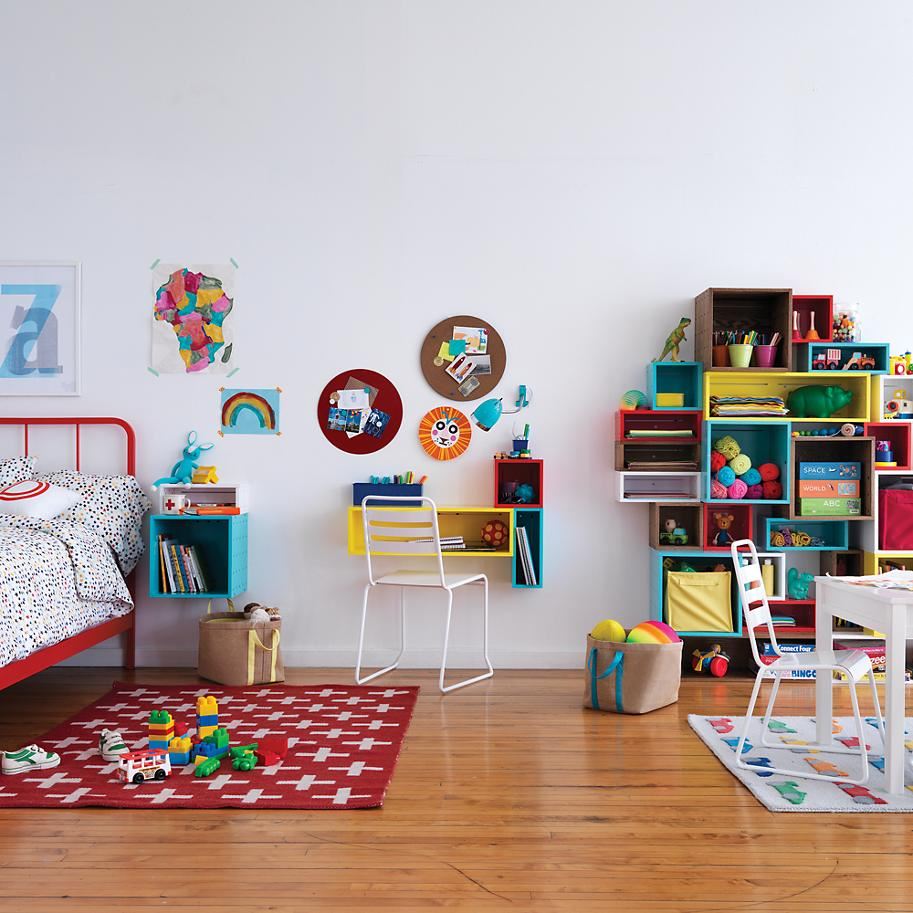
2. Purchase furnishings that double as organizational tools.
This strategy is ideal if you’re short on space. By providing your child with pieces that are dual-purpose, you create a climate where he or she can’t help but organize the room. This Topside Storage Bed from The Land of Nod is a great place to start, especially since it boasts four lower drawers, as well as a footboard and headboard that are perfect for stashing items such as books and toys.
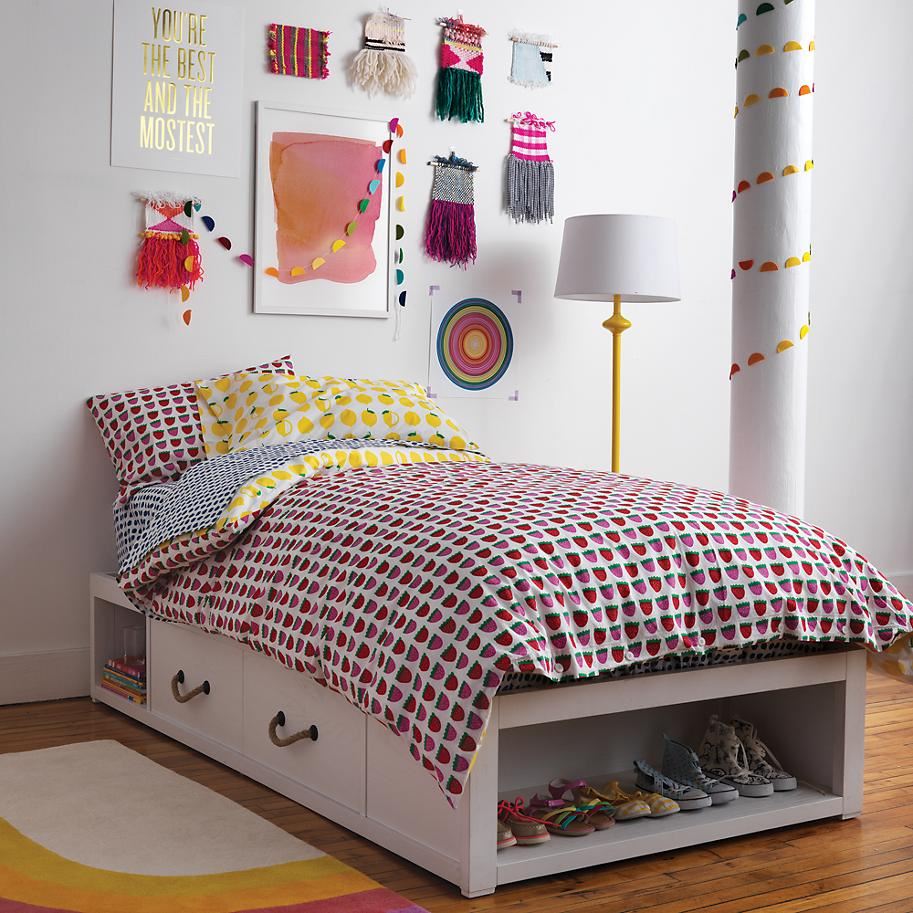
3. Create easy-to-follow routines.
Don’t assume that your child knows how to clean a room. Start by teaching good habits, even simple ones such as clearing the floor before bed. For example, shoes go in the closet, books go on the shelf, and toys go in the toybox (or this stylish Tufted Upholstered Storage Bench from The Land of Nod!):
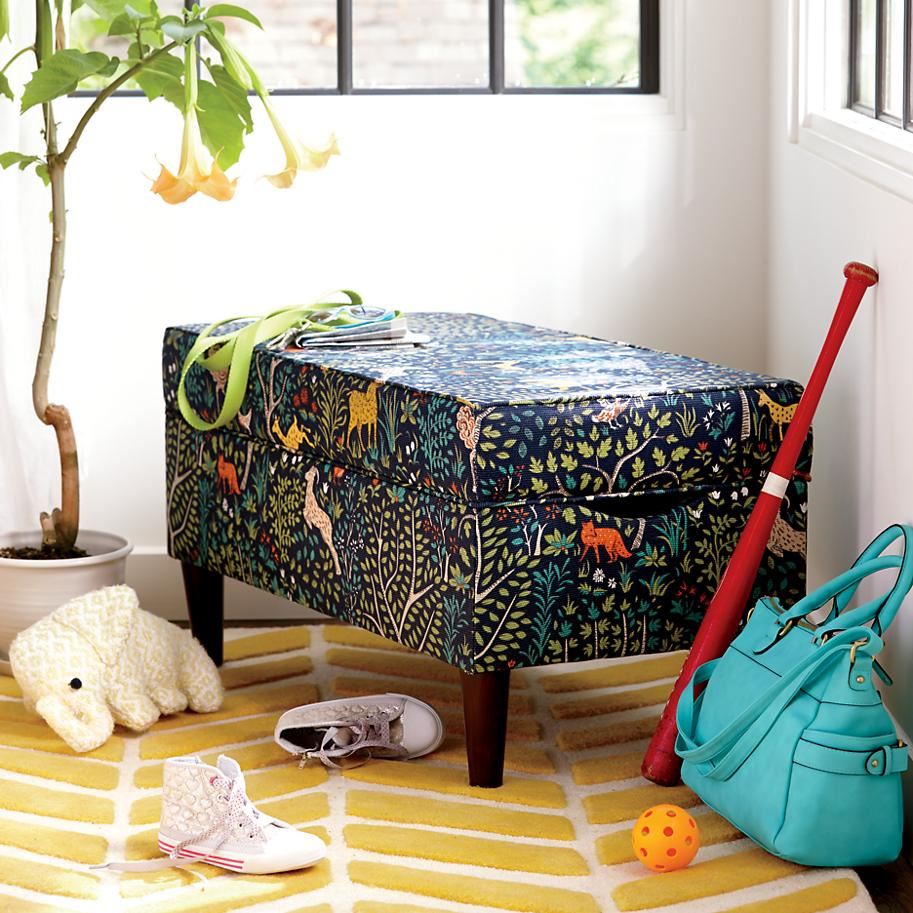
4. Provide plenty of storage options.
Speaking of storage, a few baskets can go a long way. If large pieces of storage furniture aren’t an option (or even if they are), go for cubbies, bins and baskets. There are many modern, fabulous products that will make both children and design-loving parents happy. Below we see a variety of baskets and ferm LIVING. These items are crafted from 100% organic cotton:
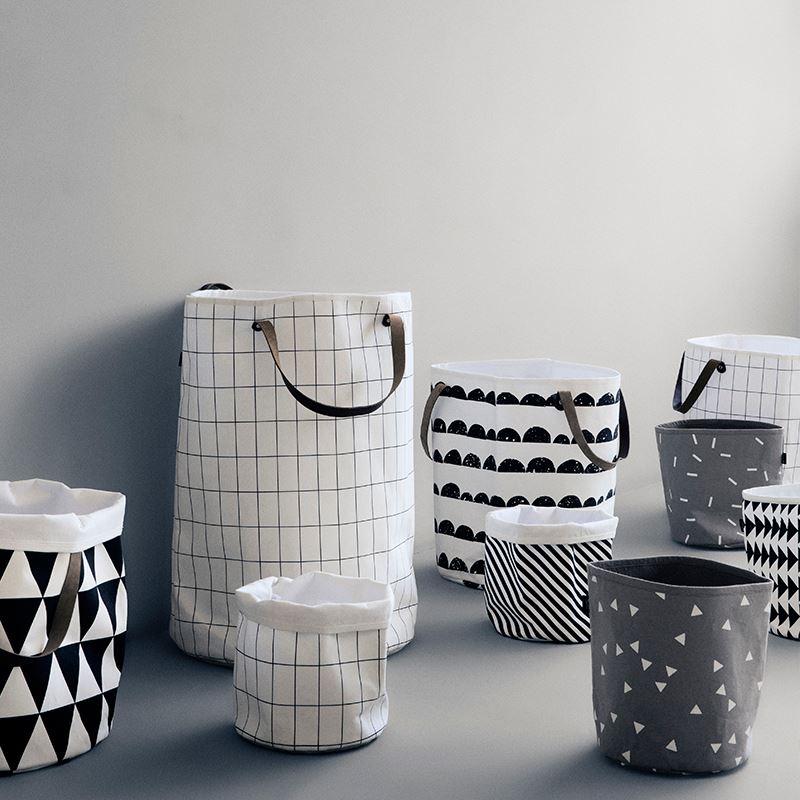
5. Utilize wall space.
Don’t underestimate the power of wall shelves, even small ones. Not to mention, you can teach your child to hang items such as bags and backpacks on hooks. Below we see a series of animal hooks from ferm LIVING. These hand painted treasures will pique the interest of your child, especially when he or she is asked to spot the sea lion, panda, rabbit and dog. Can you tell which is which?:
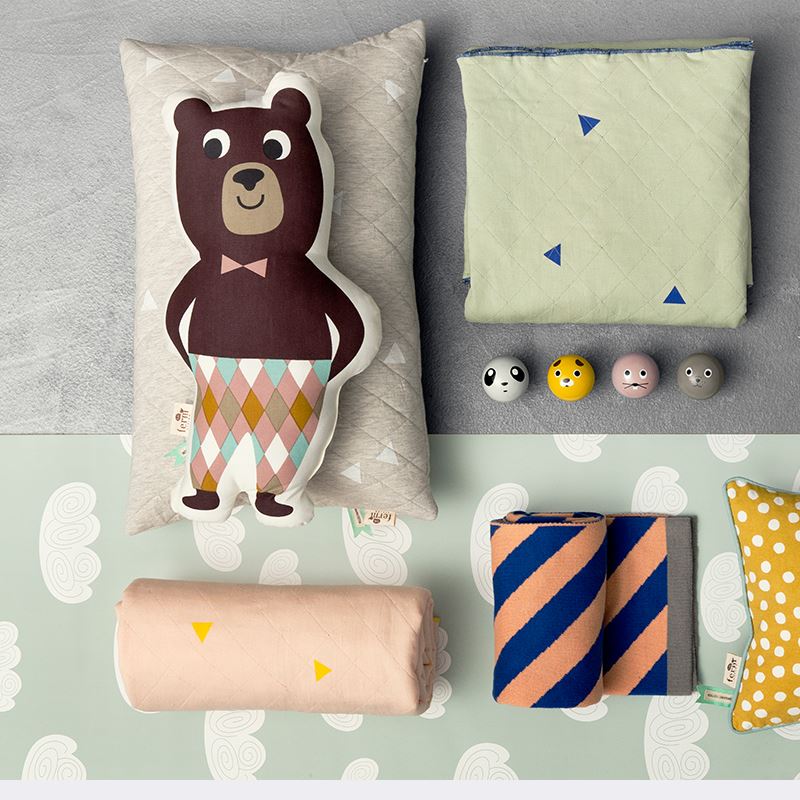
Inspiring Organization from Within
We’ve discussed some tools and tips for inspiring cleanliness in your child, but the suggestions that follow are less about helpful products and more about a state of mind.
1. Let your child create a space that he or she is truly invested in.
Yes, we’re talking about letting your child personalize his or her space! When you work hard to create something special, you’re that much more interested in taking good care of it, right? Parents who completely dictate the decor of their children’s bedrooms may not be helping the quest for a clean room. The same thing goes for parents who do all of the cleaning for their children, then one day expect them to take over the chores. [Mushroom Playhouse from The Land of Nod]
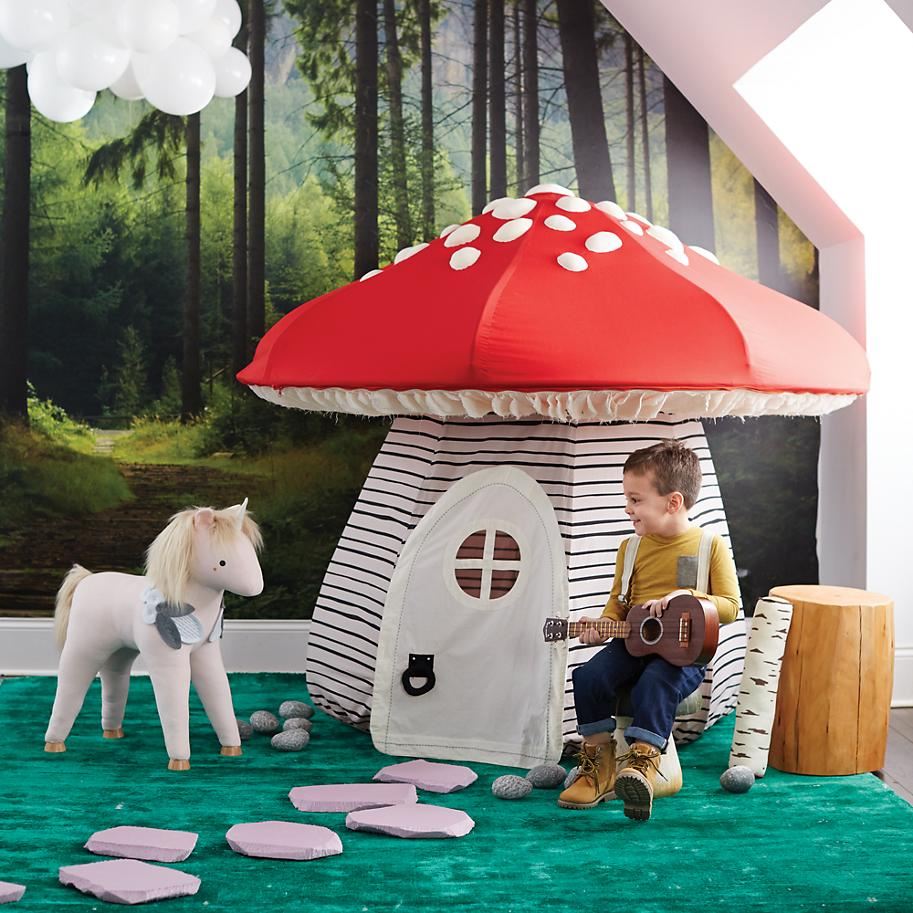
2. Model organization for your child.
If you expect your child to keep a clean space, set a good example by keeping a clean space as well! If the home is established as a place to take pride in, that message will reach your child. If he or she sees you organizing a desk or neatly storing files, the message is loud and clear. And it doesn’t hurt to invite your little one to pick out some special storage boxes when you go shopping for a file cabinet! Below we see the colorful Mix ‘N’ Match Quincy Scallop Storage Bins from PBTeen:
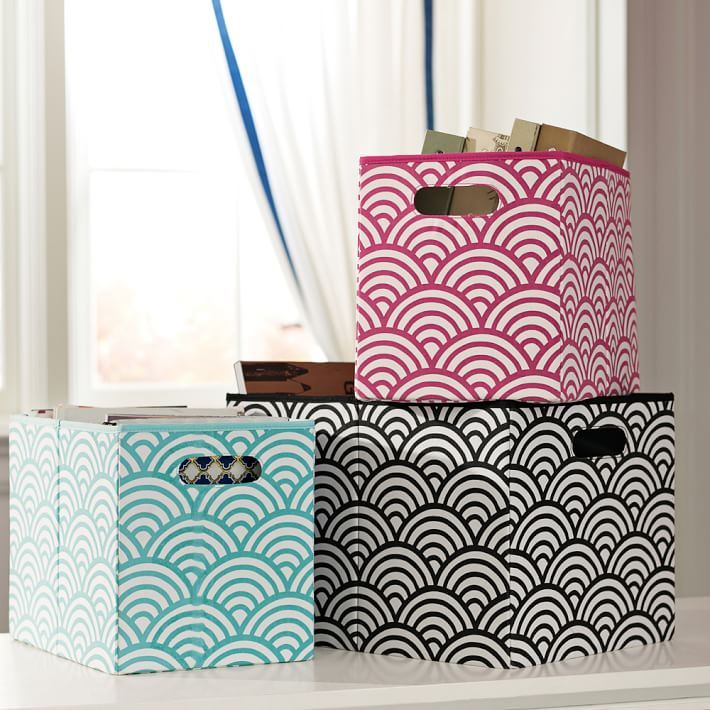
3. Instill a clutter-free philosophy.
You can’t blame children for messy rooms when you’re constantly buying them more and more stuff. Create an atmosphere of tidiness by starting early. For example, consider having your children donate a batch of toys when a new batch enters the home. Practice recycling and upcycling rather than accumulating more and more. Make sure open space is just as important as the possessions that fill a room. [London bedroom below from Alex Findlater]
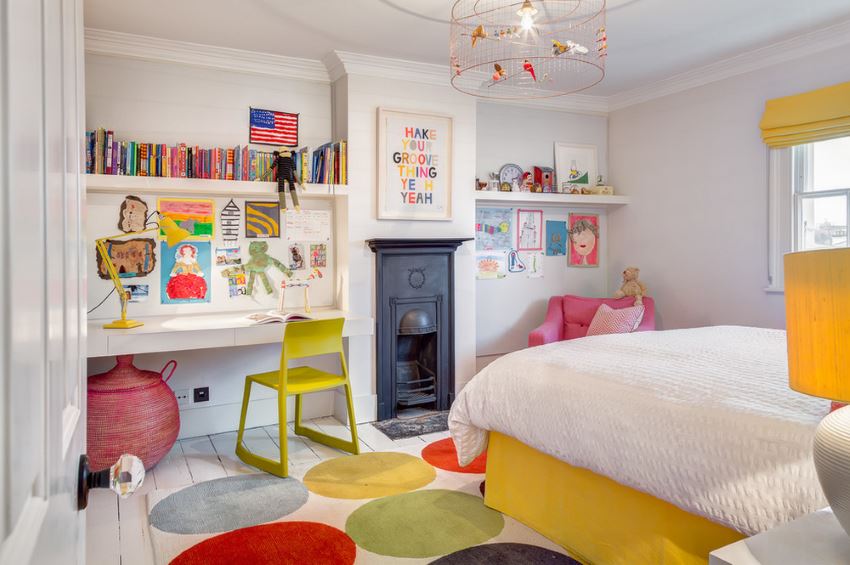
4. Leave the cleaning to your child.
For design-loving parents who value clean spaces, it might be tempting to head into a child’s room and start or finish the cleaning process. Resist the urge. While modeling cleanliness and pitching in from time to time makes sense (especially with younger kids), giving your child the freedom and the power to clean the room is a gift. This may mean turning your head and agreeing to a “closed door policy” (if your room isn’t clean, you keep the door closed so we don’t have to see it). Chances are, your child will get tired of the mess and surprise you with a clean-up job when you least expect it. [Hampton Palm Beach Bedroom from PBTeen]
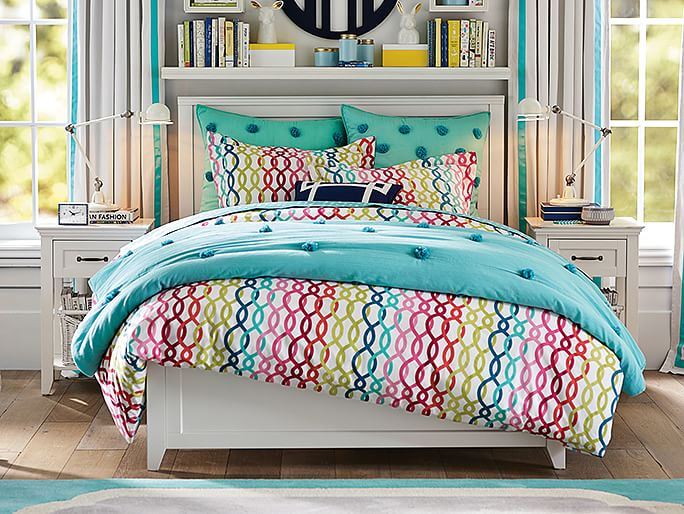
5. Praise your child for a job well done.
While this point is the last one in today’s post, it may very well be the most important! Acknowledge your child’s hard work and determination when a clean room appears. For some young children who are very resistant to cleaning, you may even consider implementing a reward system (a small treat for a clean room). If this goes against your philosophy, use the power of praise to reinforce good organizational skills. [image from ferm LIVING]
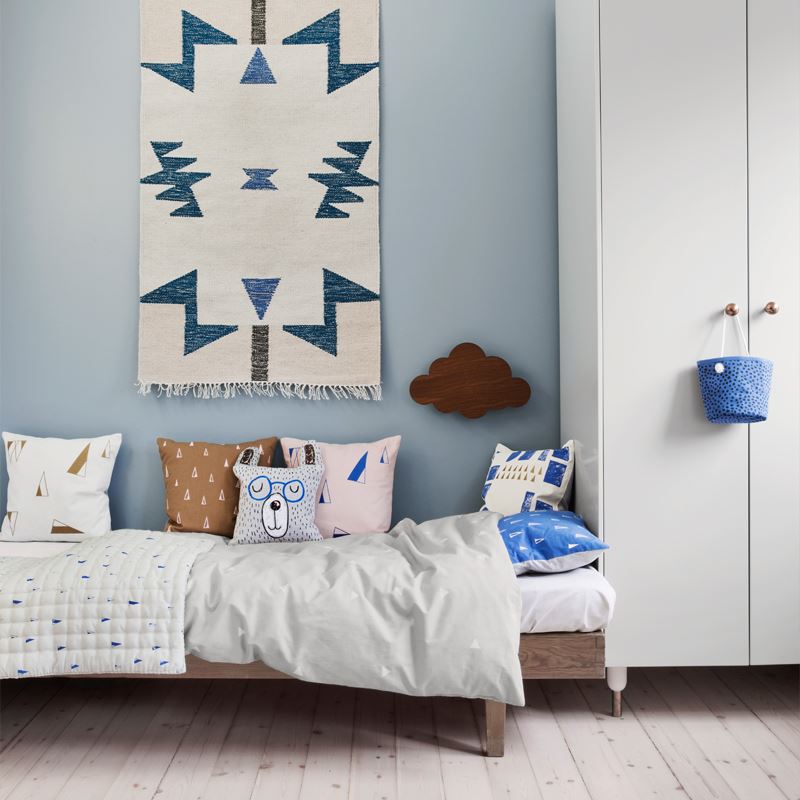
We hope today’s post has been helpful in setting good organizational habits from an early age! When it comes to teaching children to organize their spaces, do you have any tips to add? Share your thoughts by leaving a comment below…

